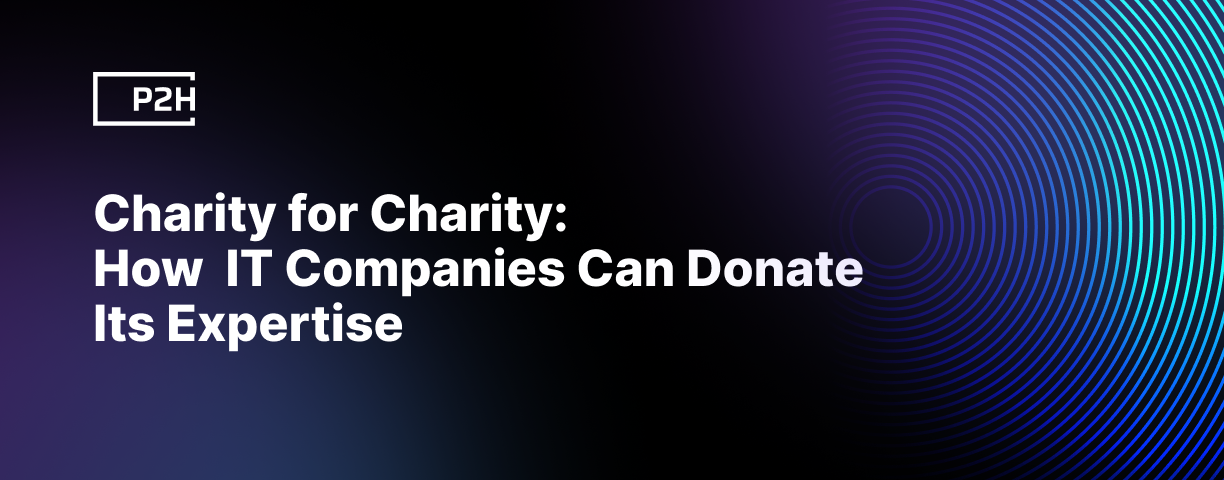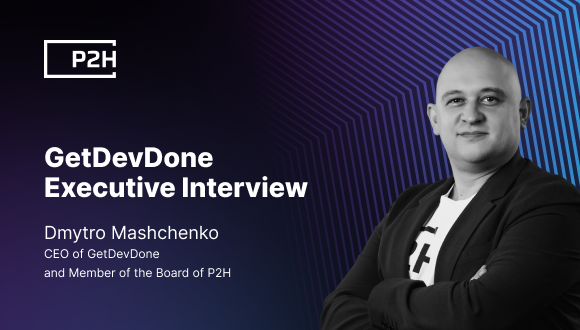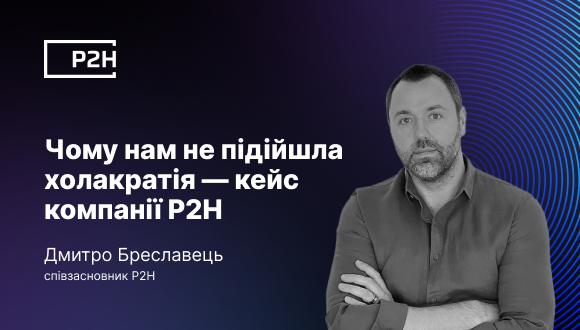
Since February 2022, the volunteer movement in Ukraine has reached its peak. It is probably difficult to find a Ukrainian not currently donating to the Armed Forces of Ukraine: people and companies are closing thousands of military and civilian needs. During a year of military operations in Ukraine, P2H completed many small projects: we bought cars and delivered equipment to the front, transported teams to safe places, and provided ammunition to those who defend the state.
And in the summer of 2022, we accidentally saw a request on Facebook from one of the volunteer organizations to create a donation website and realized that we could help with our knowledge and skills. This is how the first project of the P2H Charity Foundation, “Station Kharkiv” emerged, for which P2H developed a new website with the ability to collect voluntary contributions. P2H completed this project for charity without charge. And then, a series of such “pro bono” projects continued. The company recently completed a website for the international organization GLOBAL 2000, which has a branch in Ukraine.
Nataliia Kovrega, PM Assistant at P2H, shared the peculiarities of non-commercial IT development.
Global 2000 and P2H
The main goal of P2H was to develop a website that represents the Global 2000 organization in Ukraine. The website features the project’s history, descriptions of charitable programs, reports, and, most importantly, a simple and convenient donation system that allows anyone to make a charitable contribution in any amount.
Typically, work on commercial projects begins with discussing the client’s vision of the final result and a clear statement of work. The situation is different when working with charitable organizations:
“When working on non-profit projects, be prepared to create the SOW yourself. And that’s okay because clients are usually far from technical parameters, only have general ideas, and need your professional help. Therefore, system development, its functionality, and support will be entirely your responsibility”, Nataliia explains.
Unlike another charitable project P2H did for the Ukrainian “Stantsiya Kharkiv” fund, this was a subsidiary of the global organization GLOBAL 2000. So, while everything was “from scratch” in the former case, where the team had to stay within certain stylistic guidelines.
“We wanted to create our own logo and developed several concepts, but we had to harmonize it with the main company’s logo for approval. In addition, sometimes we had to deal with very vague formulations, such as “childish” or “colorful website” or a desire to post all existing photos from all events on the page. Advice: try to clarify all possible work details or suggest your options immediately to avoid misunderstandings in the future”, Nataliia comments.
Quality communication is the key to success. This rule applies to both commercial and non-commercial tasks.
“We constantly communicated with the client about all aspects of the project and exchanged ideas. They described their vision for the website literally in notes in Word and in impressions of what visitors to the site should get from using it. And we, in turn, suggested how to implement it and where to place everything to make it work best.
It should be noted that clients of pro bono projects often accept work without any revisions, considering that it is done for free. But this does not always mean that the work is perfect, so in such cases, it is better to turn on your inner critic and try to look at your work through the eyes of a commercial client and the product’s end user. In our case – the website visitor, who can donate to help children.
Key aspects of working on non-profit projects:
- First and foremost, clarify all details regarding the final product’s vision. This will help you clearly outline the necessary tasks and determine what constitutes a finished product and quality work.
- Request as many references as possible. This will help you better understand what the client wants and give you a rough idea of the level of detail and complexity required for its implementation.
- Assist the client in structuring information. Sometimes the flow of ideas and ambitions can make it difficult to differentiate between what you’re realistically planning to work on and what simply needs to be taken into account. In such cases, it’s better to create a shared document and jointly list all the items that the client wants to achieve.
- Offer suggestions on how to best realize the client’s vision. You can discuss anything, but as a professional, it’s up to you to determine what needs to be done for the best outcome and explain to the client why that’s the case.
- Create simple and clear instructions. In our case, this means providing instructions on how to work with the website’s backend and ongoing support for the project after its launch. This helps the client’s team become more independent and address most issues independently without spending time communicating with us.
- Be your own critic. Try to view your work as a commercial project and consider what you would want to see as a client or user. Even if you receive no feedback, it doesn’t mean that your work can’t be improved. The only question is at which stage you are satisfied with your work.
History of Global 2000
GLOBAL 2000 is an independent Austrian environmental organization and a member of Friends of the Earth, the largest international network of environmental organizations. In 1996, on the occasion of the 10th anniversary of the Chornobyl disaster, the organization conducted a separate campaign for children who suffered from this catastrophe and were treated at a children’s hospital in Kharkiv. After launching the initiative, the project’s ideologist Christoph Otto organized wide support from Austrian philanthropists to help children with severe chronic illnesses, orphans, and children from families in difficult life circumstances, especially in the Luhansk and Kharkiv regions. In 2021, GLOBAL 2000 founded the Charitable Organization “Charitable Fund Global 2000 for Children of Ukraine”.
Global 2000 in Ukraine
The Ukrainian branch of the foundation is engaged in:
- Addressing aid – treatment, examination, food, clothing, etc.;
- Providing children’s medical facilities – medical equipment, furniture and equipment, consumables, and sanitary-hygienic materials;
- Psychological support for patients, parents, and medical personnel in the hematology department of Kharkiv City Children’s Clinical Hospital No. 16;
- Providing drinking water to children’s medical facilities and educational institutions;
- Assistance to children’s institutions in the Luhansk region, where orphans and children with different degrees of vulnerability are located;
- Emergency assistance – after February 24, 2022, the Foundation joined the assistance to children from Kharkiv and the region.
In 2022, children received assistance in the amount of more than 5 million hryvnias.


